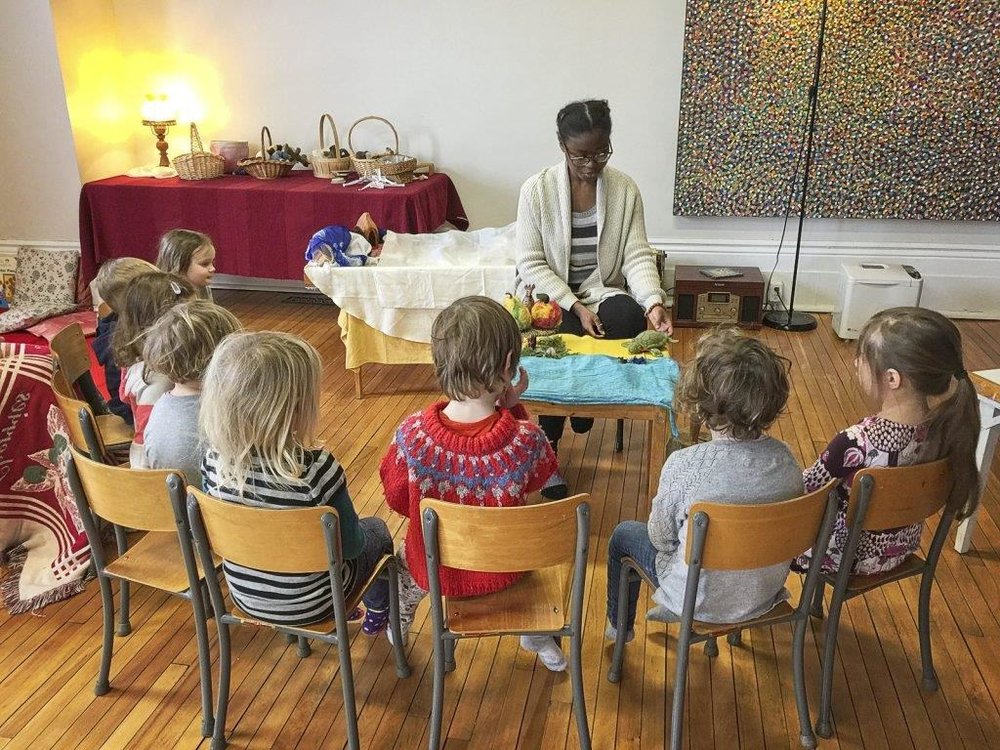 The Mount Community Centre, former residence of the Sisters of St. Joseph in Peterborough, is moving ahead to complete the second phase of their plan to respond to the critical need for affordable rental housing in the city. After unavoidable construction delays, 10 new apartments will be available this fall, as well as five specially-designed units for Shared Dreams for Independent Living, a group that sponsors five developmentally-challenged young men. This accomplishment brings the number of affordable apartments now available at The Mount Community Centre to a total of 58. Construction will continue as 5 new units, designed for families, will soon take shape on the top floor. The drawings are complete for 2 basement apartments in the A wing as well, bringing the total affordable residential units in the building to 76.
The Mount Community Centre, former residence of the Sisters of St. Joseph in Peterborough, is moving ahead to complete the second phase of their plan to respond to the critical need for affordable rental housing in the city. After unavoidable construction delays, 10 new apartments will be available this fall, as well as five specially-designed units for Shared Dreams for Independent Living, a group that sponsors five developmentally-challenged young men. This accomplishment brings the number of affordable apartments now available at The Mount Community Centre to a total of 58. Construction will continue as 5 new units, designed for families, will soon take shape on the top floor. The drawings are complete for 2 basement apartments in the A wing as well, bringing the total affordable residential units in the building to 76.
 The number of non-residential tenants has grown significantly this year. The Rowan Tree Pre-School has expanded its program to include Junior and Senior Kindergarten. St. Paul’s Presbyterian Church, forced to find other space when their sanctuary was condemned by the building department, has settled into the beautiful corner complex that includes what was once our priest’s apartment, large reception room and bishop’s parlour. The auditorium has become home to a new Art Gallery with a wide collection of works from 21 different artists. An Early Childhood Education Program is being run by Sir Sanford Fleming College this fall in Austin Doran Hall. What we knew as the old St. Joseph’s Hall is now rented by The Dennis Group fundraisers. That means there is no longer any office space for rent in this huge building.
The number of non-residential tenants has grown significantly this year. The Rowan Tree Pre-School has expanded its program to include Junior and Senior Kindergarten. St. Paul’s Presbyterian Church, forced to find other space when their sanctuary was condemned by the building department, has settled into the beautiful corner complex that includes what was once our priest’s apartment, large reception room and bishop’s parlour. The auditorium has become home to a new Art Gallery with a wide collection of works from 21 different artists. An Early Childhood Education Program is being run by Sir Sanford Fleming College this fall in Austin Doran Hall. What we knew as the old St. Joseph’s Hall is now rented by The Dennis Group fundraisers. That means there is no longer any office space for rent in this huge building.
 The food centre has expanded its enterprise to provide food services to the Kawartha Cardiology Clinic and baked goods to the Silver Bean Café. The Peterborough Community Training and Development rents the food centre every Monday to Friday, as chefs in training prepare food for Meals on Wheels, and 4 different VON locations. Every Sunday our kitchen is rented to a local chef who prepares about 400 PALEO meals to deliver to clients. A collective kitchen program, called “Cooking with Andrew” runs twice a month. Tenants are invited to cook and eat together, then take home food or fill mason jars to support clients at the St. Vincent de Paul food pantry. Bumper crops from this year’s vegetable gardens are enjoyed by tenants and processed in the food centre kitchen.
The food centre has expanded its enterprise to provide food services to the Kawartha Cardiology Clinic and baked goods to the Silver Bean Café. The Peterborough Community Training and Development rents the food centre every Monday to Friday, as chefs in training prepare food for Meals on Wheels, and 4 different VON locations. Every Sunday our kitchen is rented to a local chef who prepares about 400 PALEO meals to deliver to clients. A collective kitchen program, called “Cooking with Andrew” runs twice a month. Tenants are invited to cook and eat together, then take home food or fill mason jars to support clients at the St. Vincent de Paul food pantry. Bumper crops from this year’s vegetable gardens are enjoyed by tenants and processed in the food centre kitchen.
Significant developments appear on all fronts of this project. Within, a high-efficiency hot-water heating system has been extended throughout the house. One half of the pews from the former chapel has been redistributed throughout the building, thus leaving space for a wider use of this area. It is now possible to host a wedding reception as well as the ceremony in Austin Doran Hall. On the property, the old orchard has been revitalized through a $1000 project of the Peterborough Kawartha Rotary Club to plant fruit trees and berry bushes with the help of tenants. The home, land and gardens provided the base for a summer camp experience for elementary school children this summer. Garden plot spaces, shared with interested neighbours, flourished this year.
Amid this beehive of activity, volunteers continue to save the project thousands of dollars as they donate time and skill to endless tasks of constructing, repairing, painting, cleaning, gardening. etc. This summer “the Mount crew” was recognized with a civic award by the Mayor of Peterborough. If you pass through The Mount Community Centre today, you may run across a piano teacher, a meditation group, a pre-school child at play, a couple preparing for their wedding, a volunteer in hard hat, or a staff member passionately engaged in carrying out the mission of providing a space of safety, companionship and dignity for all who come in need. The dream for this project, called impossible five short years ago, is now being realized in an amazing way that could never have been predicted, but always hoped and prayed for.
- Sister Joan Driscoll, csj








